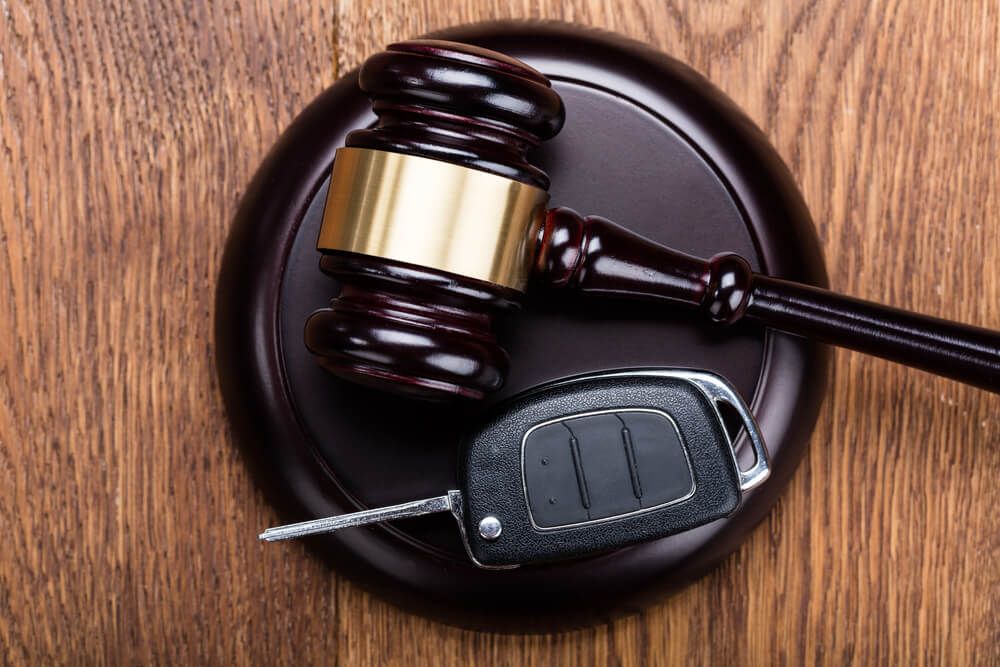Car accidents happen daily on Texas roads, and the impact can be massive. Not only do car accident victims have to deal with the shock of being in an accident — which can make them wary of getting behind the wheel again — they might also need medical treatment for severe injuries and face substantial time off work.
Fortunately, filing a car accident claim is an option, and while a settlement won’t completely alleviate the pain of this traumatic experience, it can help you recover financially.
But how does it all work, and what should you expect? We explain the car accident lawsuit process.
Areas in Greater San Antonio We Serve
The Car Accident Lawsuit Process: From Hiring a Lawyer through to Trial
As the saying goes, the wheels of justice turn slowly, but they grind exceedingly fine. Any legal action takes time, so it’s worth setting your expectations accordingly. Claims don’t settle overnight, and while insurance companies will likely prey on this fact and offer a sum to encourage you to settle quickly, it’s unlikely to be a fair offer.
The reason claims can take a while is because gathering evidence and bringing a strong case aren’t tasks to be rushed — but the wait often pays off. The stronger your evidence, the more likely you will receive a settlement that fairly compensates you for injuries.
If you’re worried your chances of winning your claim are reduced because it isn’t progressing or resolved as quickly as you expected, that’s far from the truth — these things take time.
Step 1: A Conversation with an Attorney
After seeking medical treatment for your injuries, the next step in the car accident lawsuit process is to consult an experienced personal injury attorney.
They’ll explore what happened, how it happened — including who caused the accident and is liable — and your injuries, and use that information to determine whether you have a claim.
If you do, and decide to proceed, your lawyer will begin investigating the accident and gathering evidence. This typically includes medical records that prove your injuries, the crash report filed by the police, surveillance or traffic cam footage that captured the accident, and witness statements.
Our car accident lawyers in Texas offer a free, no-obligation case review, either from one of our offices in San Antonio or McAllen, remotely, or in person at your home (we can come to you).
Step 2: Issuing the Demand and Negotiating with the At-Fault Party
The second step in the car accident lawsuit process is to file a demand to the at-fault party’s insurance company. This may be several weeks, months, or longer after your initial consultation, depending on the complexity of your claim and whether it’s clear who’s at fault.
In some cases, such as multi-vehicle crashes, liability isn’t always clear-cut, and multiple parties may share fault. It’s not uncommon for drivers to blame each other, and it can take time to determine evidence that backs up either party’s claims. This can be particularly problematic if those involved in the accident and other witnesses claim that a hit-and-run driver was responsible.
A demand will only be made when you have reached maximum medical improvement. This is when you have finished treatment or — if your injuries are more severe and life-changing — when you have recovered as much as is expected.
For example, if you fracture your wrist in a car accident, your personal injury lawyer will make a demand once the break has healed. At this stage, you will know how long your injury affected your life, how much your medical treatment has cost, and how long you’ve been away from wor
If your broken wrist has left you with weakness even after the injury has healed, you can take this into account in your claim.
The demand itself is based on the damages calculated by your lawyer. This will comprise:
- Economic damages: These are quantifiable damages such as your past and future costs of medical treatment and past and anticipated lost wages from being unable to work.
- Non-economic damages: These are damages that you can’t easily put a number to, such as pain and suffering, mental anguish, and loss of enjoyment. These are calculated by adding a multiplier to your total economic damages. This multiplier depends on the severity of your injuries and their overall impact.
Using our personal injury calculator, you can get a rough idea of how much you might be entitled to.
It’s crucial to note that your lawyer’s calculation will likely differ from the number the at-fault party’s insurance company calculates.
This is why negotiation is vital in the car accident lawsuit process.
The negotiation process can be tedious and stressful, so it’s beneficial to hire a lawyer to file your car accident claim. It’s possible to negotiate by yourself, but trained attorneys are skilled negotiators and understand the tactics employed by insurance companies to pay less. If maximizing your compensation claim is your top priority, personal injury victims who retain a lawyer overwhelmingly receive more compensation than those who go it alone — even after legal fees.
There are usually several rounds of negotiation, during which your lawyer will present various offers and advise you on whether they are fair or whether you’re entitled to more.
Most claims resolve at this stage. It’s uncommon for negotiations to fail and move to litigation, as going to court is a risk for both parties. However, if you have a strong case and the insurance company refuses to offer a fair settlement, you may want to consider going to the next step.
Step 3: Filing a Lawsuit
Going to trial is not a decision to make lightly, but your lawyer can advise you on your chances of success. However, long before you reach the courtroom and stand before a judge and jury, there are several procedures and motions you must follow.
The first is to file the lawsuit, after which you will receive a court date.
Step 4: Discovery of Evidence
After filing the lawsuit, the discovery phase of the trial begins. This can take months or even years, depending on the complexity of your case. Both parties will investigate the accident and gather evidence during this stage of the car accident lawsuit process. In addition to the evidence collected before negotiations began, evidence can include accident reconstructions and depositions from witnesses and experts.
Step 5: Negotiations, Part 2
After the evidence has been gathered and shared between parties, new negotiations begin. Just because negotiations failed previously doesn’t mean you won’t settle now. It’s not uncommon for negotiations to go down to the wire and settle just days before the trial is set to begin.
Your attorney may also recommend mediation, where both parties (and legal counsel) meet with a neutral third party to try to come to an agreement.
Step 6: Heading to Trial
Although incredibly rare, cases sometimes head to trial.
After voir dire or jury selection, the trial can begin properly. During the trial, both parties present opening statements, call witnesses to testify, submit evidence gathered during discovery, and conclude with closing arguments.
After this part of the trial procedure, the case will go to the jury, who will consider the weight of the evidence and find in favor of you or the defendant.
The car accident lawsuit process can be long and tedious, but our personal injury lawyers in Texas will do all we can to minimize your stress and take as much off your plate as possible. Fortunately, many cases settle well before litigation, but now you know what to expect at any point in the process of your car accident claim.
To see if you have a claim, contact our car accident lawyers in McAllen and San Antonio. We’ll let you know your chances of success, how long your claim might take, and how much you could be entitled to so that you’re never in the dark about what to expect.

